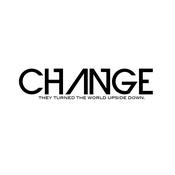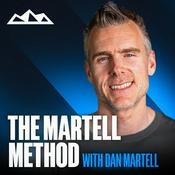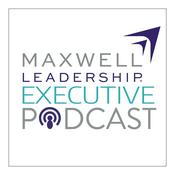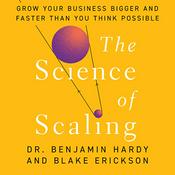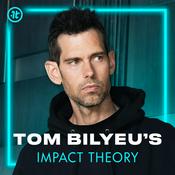Available Episodes
5 of 229
- Can AI revolutionize EPC?Big construction projects in the U.S. are notoriously unpredictable, often finishing over budget and behind schedule. Part of the problem is the inherent complexity of these kinds of projects, like data centers and first-of-a-kind plants. But there’s another problem: the companies that actually build these projects — called EPC firms for engineering, procurement, and construction — often lack strong incentives to control costs or deliver on time. That’s the thesis behind Unlimited Industries, a new startup focused on using AI to develop multiple project designs upfront and reduce project risks. So what would it take to actually cut costs and shorten construction timelines? In this episode, Shayle talks to Alex Modon, co-founder and CEO of Unlimited Industries. The company recently announced a $12 million fundraise as it emerged from stealth. Shayle and Alex cover topics like: How EPC incentives and contract structures drive cost overruns Why bespoke projects prevent learning and standardization The role software and AI can play in design and risk reduction EPC Managing risks – including geopolitics, contractor reliability, and supply chains Resources: Catalyst: FOAK tales The Green Blueprint: Shortening the nuclear development cycle from decades to years Catalyst: The cost of nuclear Credits: Hosted by Shayle Kann. Produced and edited by Daniel Woldorff. Original music and engineering by Sean Marquand. Stephen Lacey is our executive editor. Catalyst is brought to you by EnergyHub. EnergyHub helps utilities build next-generation virtual power plants that unlock reliable flexibility at every level of the grid. See how EnergyHub helps unlock the power of flexibility at scale, and deliver more value through cross-DER dispatch with their leading Edge DERMS platform, by visiting energyhub.com. Catalyst is brought to you by Bloom Energy. AI data centers can’t wait years for grid power—and with Bloom Energy’s fuel cells, they don’t have to. Bloom Energy delivers affordable, always-on, ultra-reliable onsite power, built for chipmakers, hyperscalers, and data center leaders looking to power their operations at AI speed. Learn more by visiting BloomEnergy.com.--------35:01
- Who benefits from the AI power bottleneck?The bottleneck holding back AI is a scarcity of power, or so goes the story. That may be true — and plenty of reporting backs it up — but different actors in the space face varying incentives to play up or play down that narrative. So what incentives are at play, and how do they shape each player's story? In this episode, Shayle talks to Shanu Mathew, senior vice president and portfolio manager-analyst for U.S, sustainable equity at Lazard. Last month on X, he posted a breakdown of the actors — including hyperscalers, chip makers, utilities, and others – and how the different incentives they face shape how they talk about energy and AI. They cover topics like: Hyperscalers’ mixed incentives: the benefits of building their own capacity vs encouraging others to overbuild Why equipment makers, chipmakers, and land developers benefit from talking up the bottleneck to boost demand for their services How independent power producers and gas players benefit from high prices How the power-bottleneck narrative has shifted over time Resources: Latitude Media: ERCOT’s large load queue has nearly quadrupled in a single year Latitude Media: The power bottleneck is changing data center financing Latitude Media: Early-stage data centers are driving up US power demand forecasts Credits: Hosted by Shayle Kann. Produced and edited by Daniel Woldorff. Original music and engineering by Sean Marquand. Stephen Lacey is our executive editor. Catalyst is brought to you by EnergyHub. EnergyHub helps utilities build next-generation virtual power plants that unlock reliable flexibility at every level of the grid. See how EnergyHub helps unlock the power of flexibility at scale, and deliver more value through cross-DER dispatch with their leading Edge DERMS platform, by visiting energyhub.com. Catalyst is brought to you by Bloom Energy. AI data centers can’t wait years for grid power—and with Bloom Energy’s fuel cells, they don’t have to. Bloom Energy delivers affordable, always-on, ultra-reliable onsite power, built for chipmakers, hyperscalers, and data center leaders looking to power their operations at AI speed. Learn more by visiting BloomEnergy.com. Catalyst is supported by Third Way. Third Way’s new PACE study surveyed over 200 clean energy professionals to pinpoint the non-cost barriers delaying clean energy deployment today and offers practical solutions to help get projects over the finish line. Read Third Way's full report, and learn more about their PACE initiative, at www.thirdway.org/pace.--------34:56
- Looking for a turnaround in transmissionAfter years of stalled transmission buildout, there are new signs of progress. Earlier this month, SPP approved $8.6 billion in transmission projects across 14 states. Major plans are emerging in MISO, PJM, and ERCOT. Despite the DOE canceling its loan guarantee, the Grain Belt Express is still moving forward. And regardless of court battles, so is the New England Clean Energy Connect. Are these signs that the U.S. could start building transmission at scale again? In this episode, Shayle talks to Rob Gramlich, founder and president of Grid Strategies. He and Shayle cover topics like: Why Rob says the DOE’s efforts to fast-track large-load interconnection is a positive sign for transmission buildout The recent buildout of 880 miles of transmission and why it may look better than it is Why transmission hasn’t benefited from data center investment Specific projects, including SPP’s transmission backbone and the Grain Belt Express Rob’s outlook on buildout over the coming year The uncertain future of permitting reform despite bipartisan support Resources: Catalyst: Unpacking DOE’s proposal to transform data center interconnection Latitude Media: How the Grain Belt Express lost its LPO loan E&E News: Data center growth cited in defense of MISO transmission plan Fill out our short podcast listener survey for a chance to win a $100 Amazon gift card. Credits: Hosted by Shayle Kann. Produced and edited by Daniel Woldorff. Original music and engineering by Sean Marquand. Stephen Lacey is our executive editor. Catalyst is brought to you by EnergyHub. EnergyHub helps utilities build next-generation virtual power plants that unlock reliable flexibility at every level of the grid. See how EnergyHub helps unlock the power of flexibility at scale, and deliver more value through cross-DER dispatch with their leading Edge DERMS platform, by visiting energyhub.com.Catalyst is brought to you by Bloom Energy. AI data centers can’t wait years for grid power—and with Bloom Energy’s fuel cells, they don’t have to. Bloom Energy delivers affordable, always-on, ultra-reliable onsite power, built for chipmakers, hyperscalers, and data center leaders looking to power their operations at AI speed. Learn more by visiting BloomEnergy.com.--------29:15
- New Mexico proves America can still build [partner content]Across the country, people are asking the same question: why is it so hard to build in America? From transmission lines to clean energy factories, projects are taking longer, costs are rising, and frustration is growing. But in New Mexico, two cabinet secretaries are trying to show that it doesn’t have to be this way. Together, Economic Development Secretary Rob Black and Environment Secretary Jim Kenney are helping redefine how state agencies work with industry. Their model blends speed, access, and careful environmental oversight to help companies build more quickly without cutting corners. Together, they’re using that model to attract billion-dollar fusion and geothermal projects, expand water and infrastructure investments, and deploy the state’s $65 billion sovereign wealth fund directly into advanced energy and deep-tech manufacturing. In this episode, Stephen Lacey talks with Rob Black and Jim Kenney about how New Mexico is rewriting the rules of economic development, and what their partnership can teach the rest of America about how to make government work again. This is a partner episode, produced in collaboration with the New Mexico Economic Development Department, which works to expand opportunity through innovation, infrastructure, and investment across the state.--------31:15
- Driving down the cost of green hydrogenA few years ago, industry and political leaders embraced hydrogen as a solution to a laundry list of hard-to-abate decarbonization challenges — steel production, ammonia production, and more. But hydrogen failed to come down in costs and policymakers pulled back support. Ultimately, the bubble burst. So what does it take to drive down the costs of low-carbon hydrogen and rebuild momentum? In this episode, Shayle talks to Raffi Garabedian, co-founder and CEO of Electric Hydrogen. (Shayle is on the board of Electric Hydrogen and Energy Impact Partners, where Shayle is a partner, invests in the company). Shayle and Raffi cover topics like: Why the hype bubble burst: political pullback, high renewables costs driven by AI demand, and high CapEx The real cost problem: Why engineering, procurement, and construction (EPC) costs have remained persistently high Competing approaches: Why Electric Hydrogen chose supersized electrolyzers over modular units The China question: Why hydrogen’s EPC costs will limit the impact of cheap Chinese electrolyzers Real numbers: Realistic cost targets for fossil parity and Electric Hydrogen’s current pricing Where hydrogen wins: Markets where Raffi says green hydrogen can achieve fossil parity by the early 2030s, including Brazilian fertilizer Resources: Latitude Media: is 45v guidance killing green hydrogen production? The Green Blueprint: Electric Hydrogen’s bet on supersized electrolyzers Latitude Media: Electric Hydrogen is building through the market downturn Latitude Media: Hydrogen’s narrow pathway to positive climate impacts Latitude Media: Why the Electric Hydrogen-Ambient merger is a sign of things to come Fill out our short podcast listener survey for a chance to win a $100 Amazon gift card. Credits: Hosted by Shayle Kann. Produced and edited by Daniel Woldorff. Original music and engineering by Sean Marquand. Stephen Lacey is our executive editor. Catalyst is brought to you by EnergyHub. EnergyHub helps utilities build next-generation virtual power plants that unlock reliable flexibility at every level of the grid. See how EnergyHub helps unlock the power of flexibility at scale, and deliver more value through cross-DER dispatch with their leading Edge DERMS platform, by visiting energyhub.com. Catalyst is brought to you by Bloom Energy. AI data centers can’t wait years for grid power—and with Bloom Energy’s fuel cells, they don’t have to. Bloom Energy delivers affordable, always-on, ultra-reliable onsite power, built for chipmakers, hyperscalers, and data center leaders looking to power their operations at AI speed. Learn more by visiting BloomEnergy.com. Catalyst is supported by Third Way. Third Way’s new PACE study surveyed over 200 clean energy professionals to pinpoint the non-cost barriers delaying clean energy deployment today and offers practical solutions to help get projects over the finish line. Read Third Way's full report, and learn more about their PACE initiative, at www.thirdway.org/pace.--------41:28
More Business podcasts
Trending Business podcasts
About Catalyst with Shayle Kann
Investor Shayle Kann is asking big questions about how to decarbonize the planet: How cheap can clean energy get? Will artificial intelligence speed up climate solutions? Where is the smart money going into climate technologies? Every week on Catalyst, Shayle explains the world of climate tech with prominent experts, investors, researchers, and executives. Produced by Latitude Media.
Podcast websiteListen to Catalyst with Shayle Kann, The Real Good Podcast and many other podcasts from around the world with the radio.net app
Get the free radio.net app
- Stations and podcasts to bookmark
- Stream via Wi-Fi or Bluetooth
- Supports Carplay & Android Auto
- Many other app features
Get the free radio.net app
- Stations and podcasts to bookmark
- Stream via Wi-Fi or Bluetooth
- Supports Carplay & Android Auto
- Many other app features

Catalyst with Shayle Kann
Scan code,
download the app,
start listening.
download the app,
start listening.












